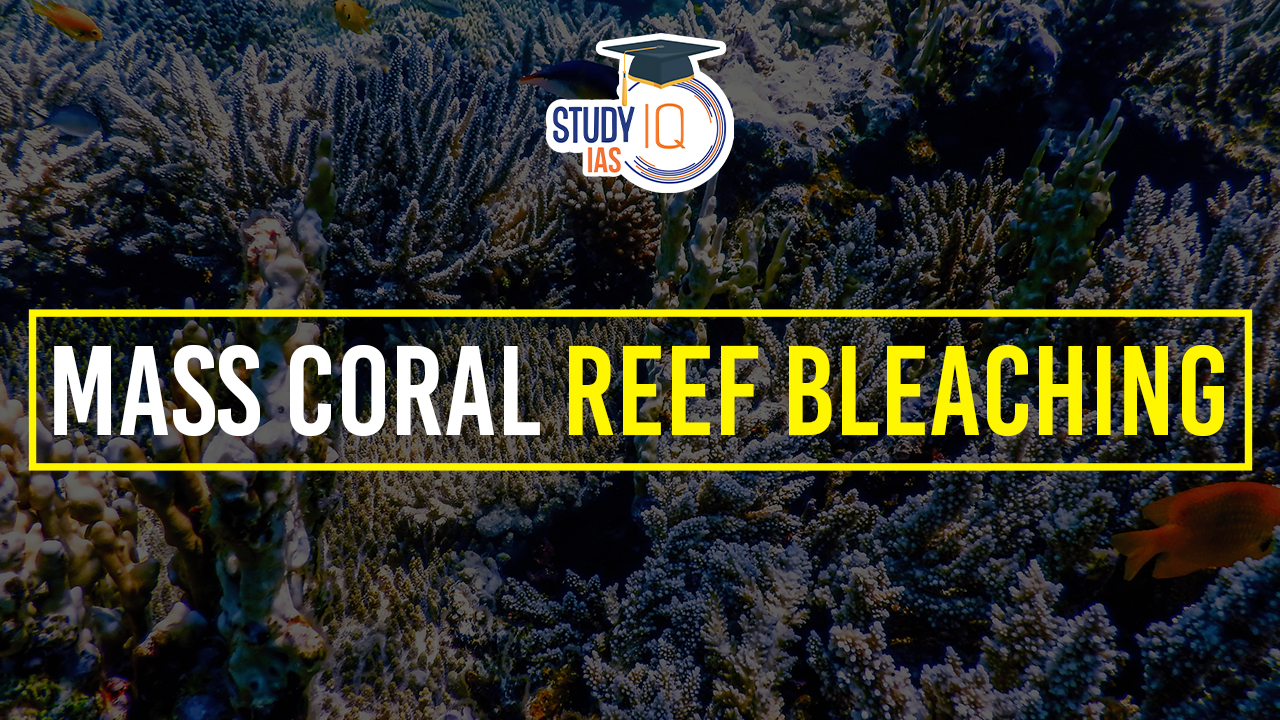Table of Contents
Context: According to the U.S. National Oceanic and Atmospheric Administration (NOAA), the world is on the verge of a fourth mass coral bleaching event which could see wide swathes of tropical reefs die.
What Are Corals and Coral Reefs?
- Corals are marine animals known as polyps that form a symbiotic relationship with algae called zooxanthellae.
- The zooxanthellae provide corals with food and oxygen, while corals offer a protective habitat.
- Coral reefs are structures made of limestone, composed of coral polyps, found in tropical climates.
We’re now on WhatsApp. Click to Join
Coral Bleaching
- Coral bleaching occurs when corals, under stress such as high temperatures or pollution, expel their symbiotic algae.
- Bleached corals turn white and struggle to survive without the algae.
- If stressors are mitigated promptly, corals may recover as zooxanthellae return.
- Reefs are crucial for marine biodiversity, coastal protection, and carbon absorption.
- They contribute to the livelihoods and safety of human communities.
| NOAA’s Findings on Coral Bleaching |
|


 Sarhul Festival: A Sacred Adivasi Celebr...
Sarhul Festival: A Sacred Adivasi Celebr...
 Khadi and Village Industries Commission ...
Khadi and Village Industries Commission ...
 What is Vibe Coding ? The Future of Effo...
What is Vibe Coding ? The Future of Effo...





















